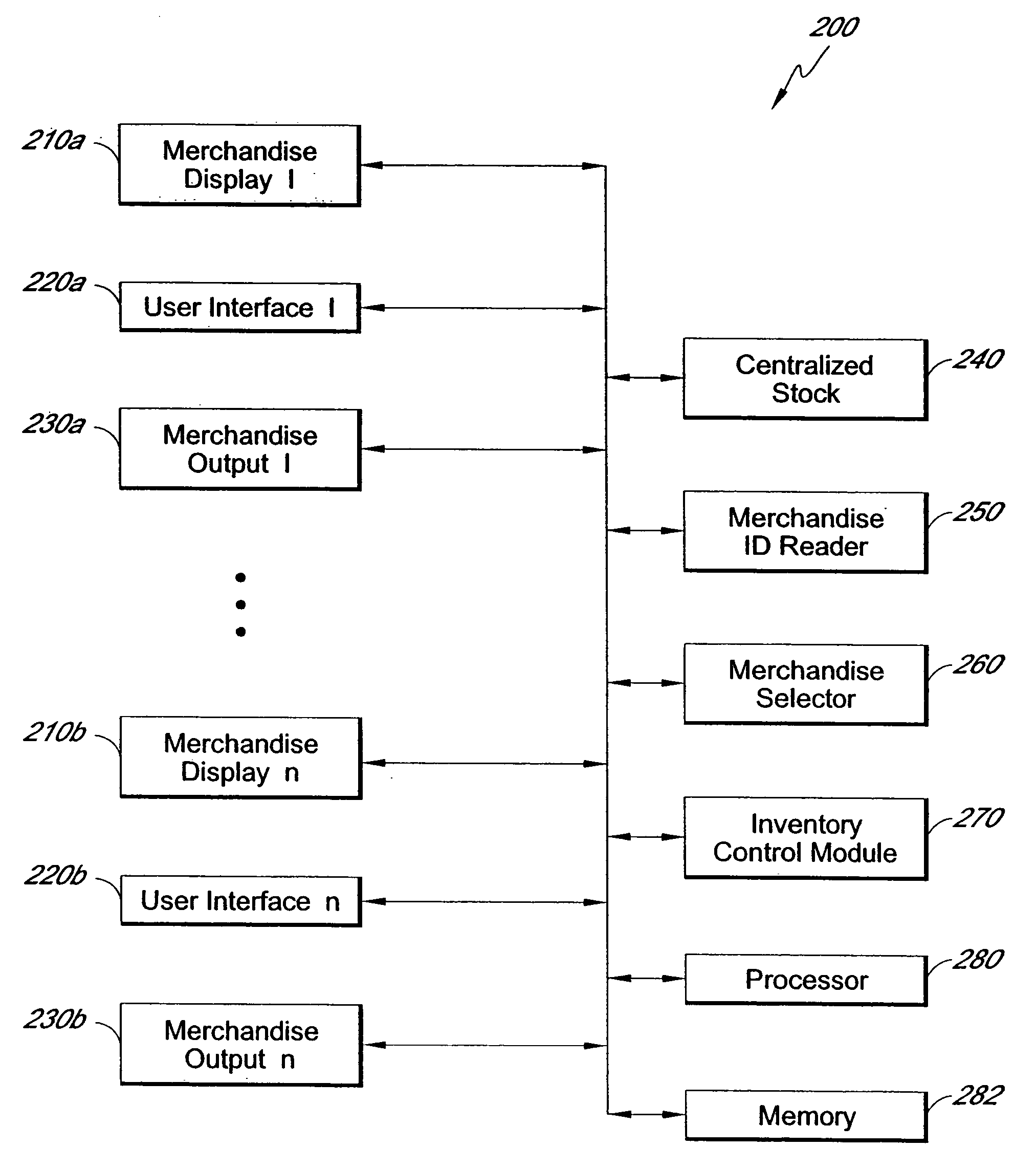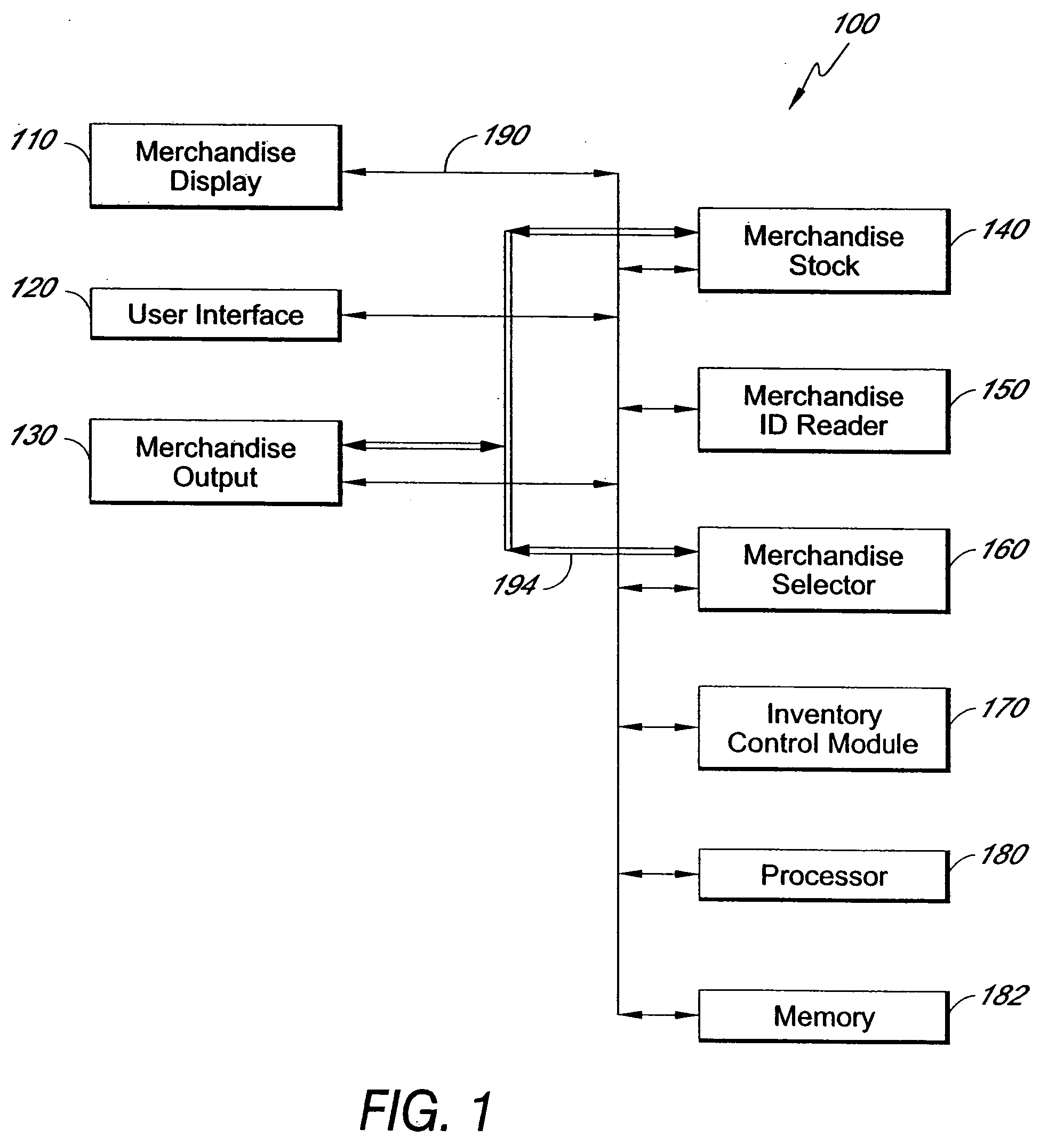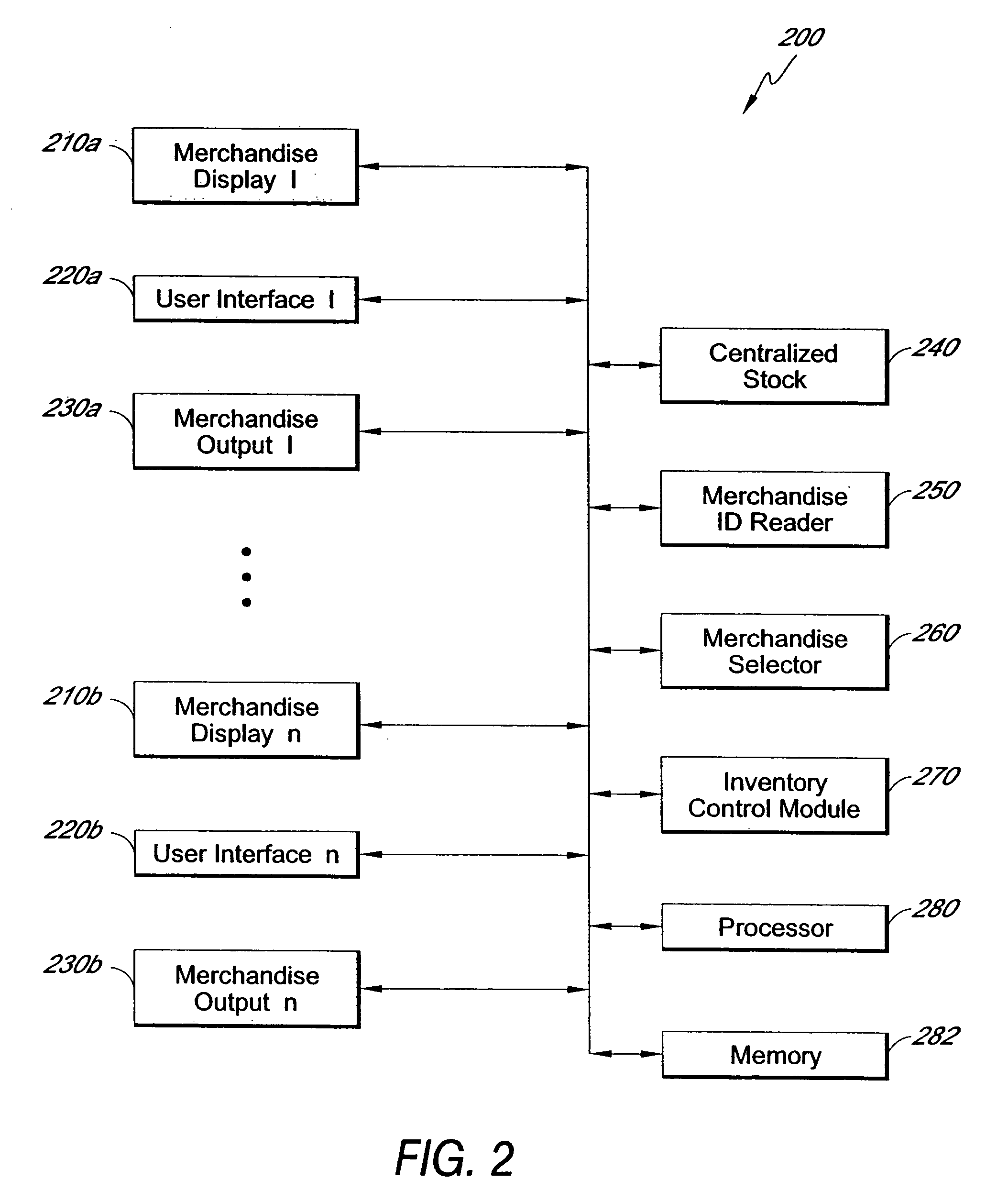Automated merchandising dispenser
a dispenser and automatic technology, applied in the field of merchandising dispensers, can solve the problems of consumer failure to find the desired item, clothing racks are often in a state of disarray, and the loss of a large amount of the organization for the collection of items
- Summary
- Abstract
- Description
- Claims
- Application Information
AI Technical Summary
Benefits of technology
Problems solved by technology
Method used
Image
Examples
Embodiment Construction
[0028] A merchandise dispensing system and method that overcomes many of the above-described disadvantages from both a consumer's perspective as well as a retailer's perspective is disclosed herein. The merchandise dispensing system, as disclosed herein, allows a retailer to stock items in an automated dispenser after associating the items with a machine readable identification (ID). The machine readable ID typically includes information relating to personalization criteria of the item. The personalization criteria may, for example, include the size, color, and style of a particular item. Once the merchandising dispenser is stocked, each of the machine readable IDs is read to create an electronic log, or record, of the inventory available to the merchandising dispenser.
[0029] One or more sample items may be displayed on the merchandising dispenser. A user is able to interact with an electronic interface on the merchandising dispenser in order to select an item to be dispensed. Typi...
PUM
 Login to View More
Login to View More Abstract
Description
Claims
Application Information
 Login to View More
Login to View More - R&D
- Intellectual Property
- Life Sciences
- Materials
- Tech Scout
- Unparalleled Data Quality
- Higher Quality Content
- 60% Fewer Hallucinations
Browse by: Latest US Patents, China's latest patents, Technical Efficacy Thesaurus, Application Domain, Technology Topic, Popular Technical Reports.
© 2025 PatSnap. All rights reserved.Legal|Privacy policy|Modern Slavery Act Transparency Statement|Sitemap|About US| Contact US: help@patsnap.com



